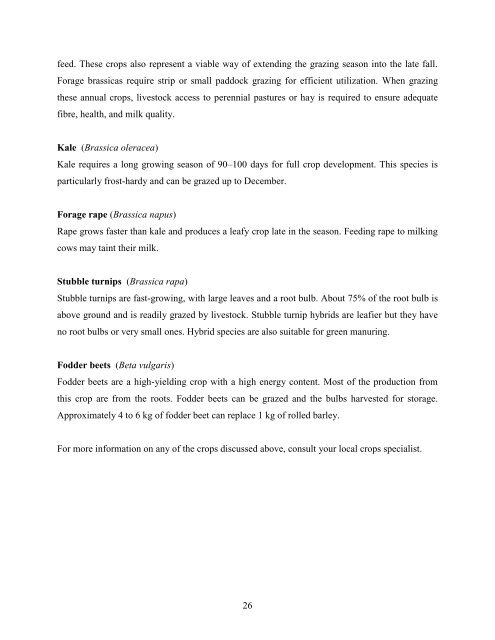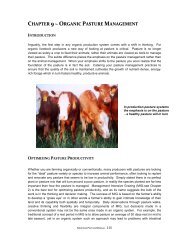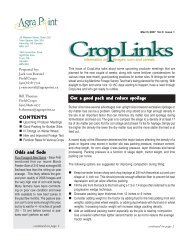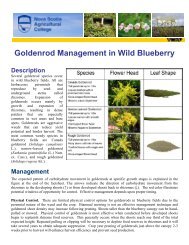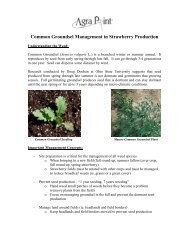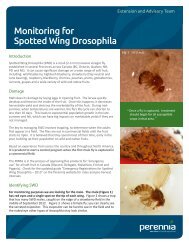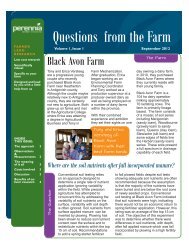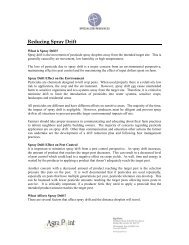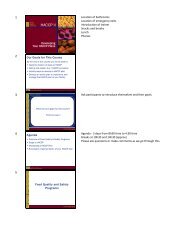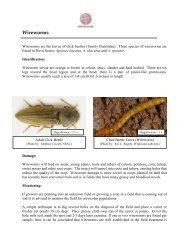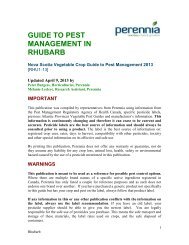You also want an ePaper? Increase the reach of your titles
YUMPU automatically turns print PDFs into web optimized ePapers that Google loves.
feed. These crops also represent a viable way of extending the grazing season into the late fall.<br />
<strong>Forage</strong> brassicas require strip or small paddock grazing for efficient utilization. When grazing<br />
these annual crops, livestock access to perennial pastures or hay is required to ensure adequate<br />
fibre, health, and milk quality.<br />
Kale (Brassica oleracea)<br />
Kale requires a long growing season of 90–100 days for full crop development. This species is<br />
particularly frost-hardy and can be grazed up to December.<br />
<strong>Forage</strong> rape (Brassica napus)<br />
Rape grows faster than kale and produces a leafy crop late in the season. Feeding rape to milking<br />
cows may taint their milk.<br />
Stubble turnips (Brassica rapa)<br />
Stubble turnips are fast-growing, with large leaves and a root bulb. About 75% of the root bulb is<br />
above ground and is readily grazed by livestock. Stubble turnip hybrids are leafier but they have<br />
no root bulbs or very small ones. Hybrid species are also suitable for green manuring.<br />
Fodder beets (Beta vulgaris)<br />
Fodder beets are a high-yielding crop with a high energy content. Most of the production from<br />
this crop are from the roots. Fodder beets can be grazed and the bulbs harvested for storage.<br />
Approximately 4 to 6 kg of fodder beet can replace 1 kg of rolled barley.<br />
For more information on any of the crops discussed above, consult your local crops specialist.<br />
26


